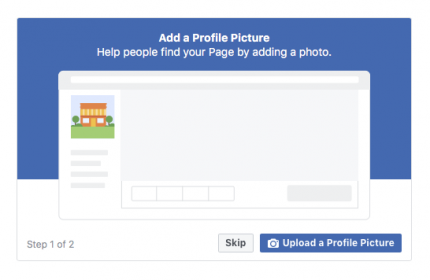 Between stay-at-home orders, mask mandates and the general fear accompanying a pandemic, fewer people are willing to venture out into the world right now. For brick-and-mortar small businesses, that means fewer opportunities for face-time with customers. Many small businesses have shut down, and even more face the need to adapt. The solution for both is one you’re already familiar with: social media.
Between stay-at-home orders, mask mandates and the general fear accompanying a pandemic, fewer people are willing to venture out into the world right now. For brick-and-mortar small businesses, that means fewer opportunities for face-time with customers. Many small businesses have shut down, and even more face the need to adapt. The solution for both is one you’re already familiar with: social media.
In lieu of face-to-face interactions and in-person experiences, small businesses are leveraging the power of social media to connect with their customers. Posting new products on Instagram and taking phone orders. Tweeting discount codes to encourage customers. Even sharing Facebook funnies to keep people engaged. Social media has become invaluable during COVID-19.
To get the most out of your social platforms in this ‘new normal,’ it’s worth taking a look at how you might improve your online interactions. Here are seven tips from our social experts for how to optimize the social experience for your loyal followers.
1. Update Your Social Profiles
If you plan on doing business via your social platforms, make sure they’re updated with relevant information. Start with your NAP—name, address and phone number. Then, move on to hours of operation, contact methods and any other relevant information that might help people get in contact with you.
Visitors to your social profiles should find consistent information that’s accurate and helpful. Make it as easy as possible for people to interact with you if they so choose to. It’s also wise to go back and clean up your feeds and bios. Get rid of old posts that didn’t perform well or that performed negatively, and keep your about sections relevant.
2. Listen to What Your Customers (and Competitors) Say
One of the simplest ways to make sure you’re a relevant contributor is to put out content people care about. Listen to what your customers and competition say and produce or curate content that aligns with it.
Answer questions. Educate. Provide information. Give people a reason to interact with your content, rather than pass it up as they scroll. Look at your post analytics to see what types of posts get likes, shares and comments. Then, scroll your competitors’ recent posts to see what performed well for them. Use this information to generate better-performing content.
3. Make Your Posts About Your Customers, Not About You
One of the biggest advantages small businesses have is their community roots. Big businesses just can’t relate to the community like a small business can. Use this to your advantage and post content that’s relevant to your community and the people in it.
Make your posts about things your followers care about—things that might affect them personally or that they feel strongly about. Let them know that you care about them, beyond their affiliation with your business or their willingness to spend money with you. Connect with people on social first as individuals, then as followers, then as customers.

4. Dial-In and Clean Up Your Graphics
Social media is largely a visible platform, which means your graphics need to be on-point at all times. From your profile picture to the top banner on Facebook and Twitter, to every single photo you share on your Instagram feed, your graphics need to be crisp and polished.
Beyond that, make sure your imagery is relevant and, if it’s branded, a good reflection of your business. Avoid generic images or low-quality formats, which can cheapen the visual experience people have. To really take things to the next level, work with a graphic designer to create your own original graphics, stylized specifically for your brand.
5. Try a New Posting Schedule or Post Format
When and what posts have a major impact on what people see and how they react? If your posts haven’t been getting the traction you expect from them lately, switch it up! Try posting some original content instead of another generic meme, or share an infographic instead of another longform article. Use social analytics to see which posts get the most engagement and when they’re posted, then create a posting schedule that’s built on proven successes. It’ll take time, but a data-driven approach like this is one you can use to promote real, measurable increases in engagement.
6. Educate and Connect; Don’t Sell
Too many small businesses use social media as a sales tool. While it can be a valuable selling platform, that’s not its primary function. Social media is about connecting and brand building, as well as developing trust and credibility with your followers. Make sure your posts reflect that. If they’re self-promoting or too heavily weighted in sales messaging, you’ll turn people off. Turn your social feeds into a place that promotes conversation, not direct sales. You might just find that passive brand building creates more sales than active marketing!
7. Repurpose Your Winning Posts
Why reinvent the wheel? Take a look back at the posts that performed the best for you and find a way to reintroduce them into your posting schedule. This goes for any media that’s gotten traction for you in the past—blog posts, YouTube videos, emails, etc. if people responded well to something, it means the message resonated with them. These positive examples shouldn’t go to waste! Alter the presentation without disrupting the core message and you’ll double-down on something you know works.

Be More Mindful on Social
Put all these suggestions together and it adds up to optimized profiles that are engaging and exciting—profiles people pay attention to. If you’re trying to turn former foot traffic to online impressions, put these tips to work and watch your social media metrics. It won’t be long until you see an uptick and start to enjoy more meaningful interactions with the people who support your business.
Don’t forget, this is foundational brand building work! Even long after the pandemic is over, your efforts to cultivate great social media profiles will pay dividends in the customer relationships you form with people.










